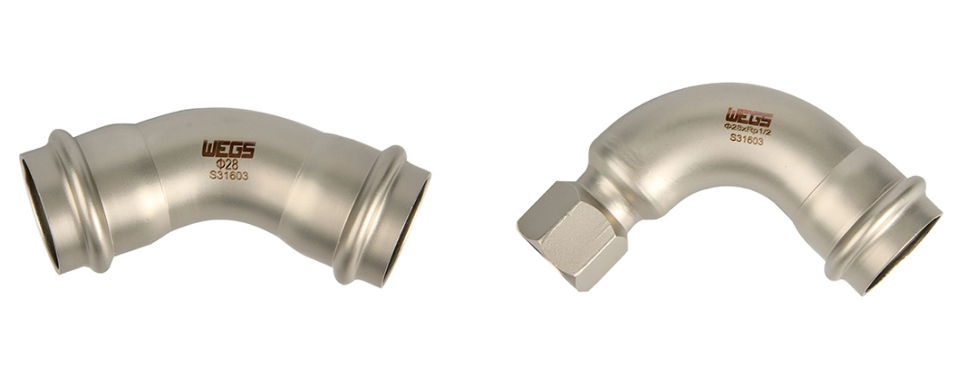In the piping system, elbows are a vital connector used to change the direction of the pipe, thereby ensuring efficient transmission of fluids in the system. According to the angle, elbows are mainly divided into three types: 45 degrees, 90 degrees and 180 degrees, among which 45 degree elbows and 90 degree elbows are the two most commonly used types.
Unique advantages of 45-degree elbows In the pipeline system, the 45-degree elbow, as a key connector, plays an important role with its unique 45-degree angle design. It is suitable for pipeline layouts that require a smaller angle turn, such as fluid transmission lines in the chemical and petroleum fields. Its buffering effect is significant, which helps to reduce water flow impact and protect the pipeline system from damage.
In the pipeline system, the 90-degree elbow, as a key connector, is widely used in situations where large angles of turning are required, such as vertical turning in building drainage systems, with its right-angle design. The stainless steel 90 degree elbow can achieve a complete change in the direction of the pipeline and adapt to a variety of complex pipeline layout requirements.

Maintenance Frequency: 45-degree elbows generally experience less turbulence and pressure drop compared to 90-degree elbows, potentially reducing the frequency of maintenance required.
Wear and Tear: The smoother flow through 45-degree elbows can result in less wear and tear on the piping system, leading to lower maintenance costs over time.
Inspection and Cleaning: 90-degree elbows may require more frequent inspections and cleaning due to higher chances of debris accumulation and blockages, increasing maintenance efforts and costs.
Replacement Costs: Due to the higher stress and potential for damage in 90-degree elbows, they may need to be replaced more often than 45-degree elbows, contributing to higher long-term maintenance expenses.
Overall Efficiency: While initial installation costs might be similar, the overall efficiency and reduced maintenance needs of 45-degree elbows can lead to significant cost savings in the long run.
SS elbow 45 degree is more durable than plastic elbow, can withstand higher pressure and temperature, suitable for more demanding environments.
90 degree elbow stainless steel is also more durable than plastic elbow, especially in applications that need to withstand high mechanical stress.
Stainless steel 45 degree and 90 degree elbows have lower maintenance costs due to their superior corrosion and wear resistance, while plastic elbows may increase the frequency of maintenance and replacement due to wear and aging in long-term use.
For procurement professionals, selecting between 45 degree and 90 degree elbows involves balancing performance, cost, and project requirements. At Wegs (Shanghai) Fluid Technology, we provide data-driven insights to simplify your decision. Our 45 degree elbows, optimized for minimal flow disruption, reduce turbulence and energy costs by up to 15% in high-pressure systems like chemical processing, based on proprietary flow simulations. In contrast, 90 degree elbows excel in space-constrained applications, such as urban drainage or HVAC systems, where sharp turns are unavoidable.
Cost-effectiveness is key. Our 45 degree stainless steel elbow, manufactured with precision CNC machining, offer up to 20% less wear in corrosive environments (e.g., saline conditions) compared to standard fittings, extending maintenance cycles and lowering lifecycle costs. Wegs' 316 stainless steel options ensure durability, while our customization services allow tailored dimensions to meet unique project specs. Procurement teams can rely on our ASME B16.9-compliant quality and dedicated support to streamline sourcing and ensure project success.